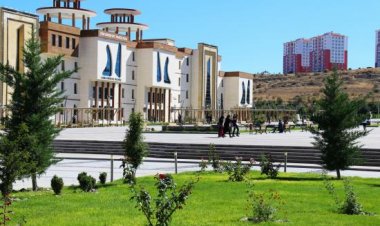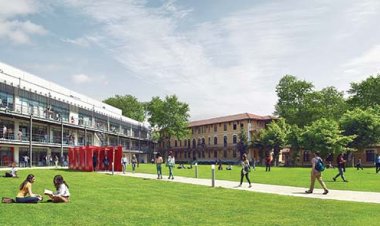Teaching large angle pendulum via Arduino based STEM education material
Teaching large angle pendulum via Arduino based STEM education material Erol, Mustafa; Oğur, Mehmet This study reports an Arduino based STEM education material that resolves large angle pendulum, alternatively anharmonic oscillator, both experimentally and theoretically, particularly focuses on the time dependence of the instantaneous displacement angles. Instantaneous time dependence of the angles is experimentally measured by using Arduino Nano microprocessor connected to a gyro sensor and a bluetooth transmitter/receiver structured as a STEM education material. Theoretical resolution of the large angle pendulum is also accomplished by considering the approximate solution taking into account the relevant frictional effects. The theoretical and experimental resolutions are managed for the initial angles of θ0 = 1.40 rad and θ0 = 2.61 rad, specifically focusing on the angular frequencies, frictional effects and anharmonicity of the motion. The relative errors concerning the angular frequency are found to be % 15.2 and % 6.5 for θ0 = 2.61 rad and θ0 = 1.40 rad, respectively. The exponential decrease due to the frictional effects are in perfect agreement with each other and providing a friction coefficient of γ = 0.015kg ms−1 for both experimental and theoretical results. The anharmonicity of the pendulum is also illustrated by comparing the experimental plots and relevant theoretical plots for the small angle approximations. This work offers a prototype teaching material which can create an education environment where students can feel dynamic and encompass the acquisitions of Science Technology Engineering and Mathematics.

Teaching large angle pendulum via Arduino based STEM education material Erol, Mustafa; Oğur, Mehmet This study reports an Arduino based STEM education material that resolves large angle pendulum, alternatively anharmonic oscillator, both experimentally and theoretically, particularly focuses on the time dependence of the instantaneous displacement angles. Instantaneous time dependence of the angles is experimentally measured by using Arduino Nano microprocessor connected to a gyro sensor and a bluetooth transmitter/receiver structured as a STEM education material. Theoretical resolution of the large angle pendulum is also accomplished by considering the approximate solution taking into account the relevant frictional effects. The theoretical and experimental resolutions are managed for the initial angles of θ0 = 1.40 rad and θ0 = 2.61 rad, specifically focusing on the angular frequencies, frictional effects and anharmonicity of the motion. The relative errors concerning the angular frequency are found to be % 15.2 and % 6.5 for θ0 = 2.61 rad and θ0 = 1.40 rad, respectively. The exponential decrease due to the frictional effects are in perfect agreement with each other and providing a friction coefficient of γ = 0.015kg ms−1 for both experimental and theoretical results. The anharmonicity of the pendulum is also illustrated by comparing the experimental plots and relevant theoretical plots for the small angle approximations. This work offers a prototype teaching material which can create an education environment where students can feel dynamic and encompass the acquisitions of Science Technology Engineering and Mathematics.

 Bilgi
Bilgi 















